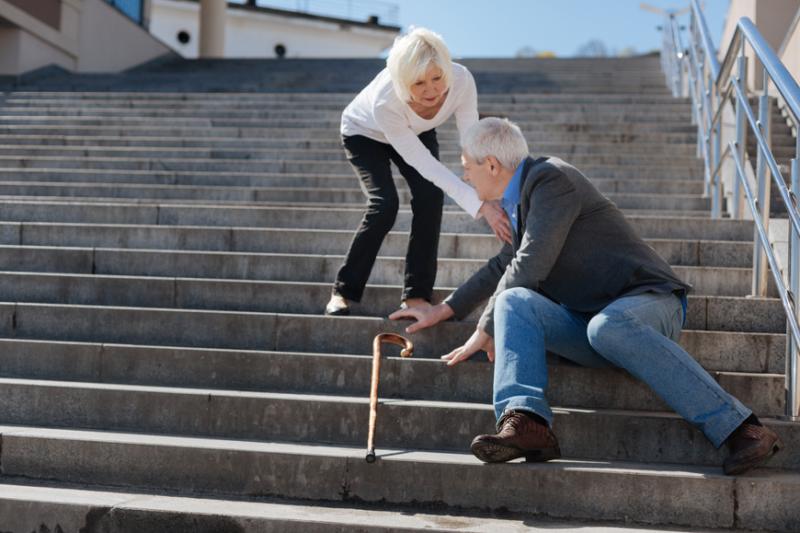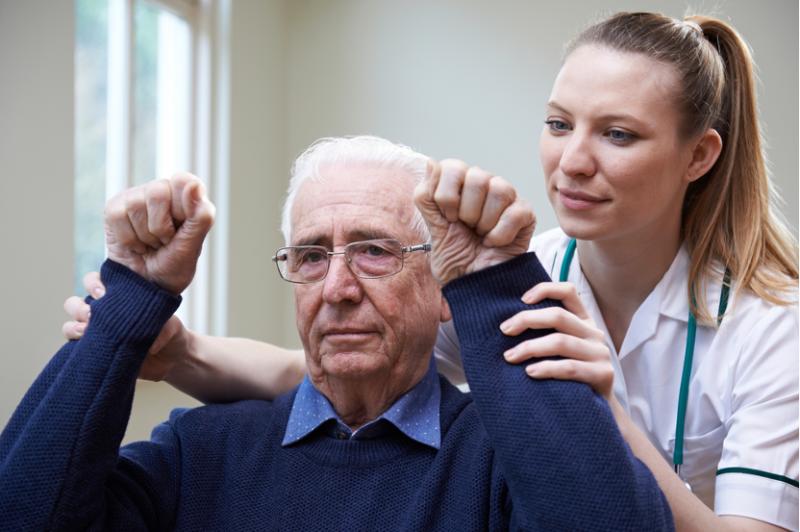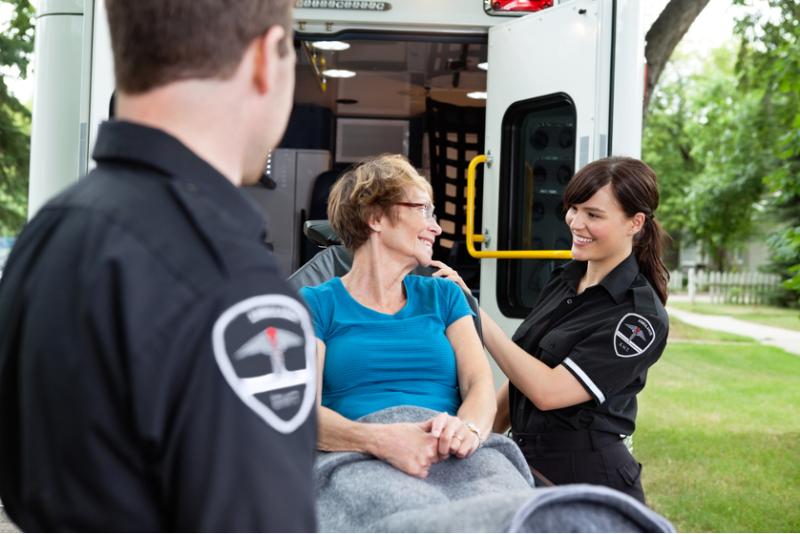Stroke Symptoms Everyone Should Be Aware Of
According to the CDC, more than 795,000 people have a stroke in the U.S. each year. Every 40 seconds, someone in the U.S. has a stroke, and every 3 minutes and 14 seconds someone dies of stroke. Stroke is also a leading cause of serious long-term disability, reducing mobility in more than half of stroke survivors age 65 and older. Thankfully, quick action can help stroke victims get medical treatment quickly and increase the odds of a positive outcome. Here are the warning signs of a stroke to look out for:

By Dmytro Zinkevych / Shutterstock.com
Warning Signs of a Stroke
To make things easier to remember, healthcare professionals have devised the acronym FAST to remind people what to watch out for if someone is having a stroke. These letters stand for:
- F = Face Drooping: One side of the face is drooping or numb. Ask the person to smile; if they are having a stroke, their smile will be uneven.
- A = Arm Weakness: One arm is weak or numb. Ask the person to raise their arms; if they are having a stroke, one arm will drift downward.
- S = Speech Difficulty: Speech will be slurred if they are having a stroke.
- T = Time to call 911 if any of the above symptoms are present.
Beyond these signs, there are some other stroke symptoms that you should also watch out for. Other warning signs to look out for include:
- Trouble seeing: Vision may suddenly blur or blacken in either one or both eyes during a stroke. Some people also experience double vision.
- Difficulty speaking and understanding: In addition to slurring their words, stroke victims might have difficulty understanding other people’s speech or experience confusion.
- Severe headache: These headaches typically come on suddenly out of nowhere and may be accompanied by vomiting, dizziness and/or altered consciousness. They typically have no discernible cause besides the stroke.
- Numbness, weakness or paralysis: This typically occurs in one side of the body only. It’s more noticeable in the arms and face, which is why those are part of the FAST acronym, but may be noticeable in the torso and legs as well.
- Trouble walking: The muscle weakness and numbness, as well as the dizziness, typically results in a loss of coordination that leads to trouble with walking and moving. These may not be as noticeable in people who use wheelchairs and wear wheelchair adaptive clothing, so watch out for the other signs too.

By SpeedKingz / Shutterstock.com
Responding Quickly During a Stroke
Fast response times are of paramount importance for increasing the likelihood of a full recovery and reducing the odds that there will be disability after the stroke. Strokes occur when your brain doesn’t get enough blood and oxygen. For every minute that a stroke lasts, nearly two million brain cells die. The longer a stroke goes on, the more damage the brain sustains, and the greater the risk of disability or death. (Though adaptive clothing and other solutions can improve the quality of life for stroke victims after the fact.)
Many stroke treatments also need to be administered within a certain window after the stroke starts in order to be effective. For instance, a clot-busting medication called tissue plasminogen activator (tPA) needs to be administered within 3 to 4.5 hours of the stroke onset. If you think that someone is having a stroke, do not let them talk you out of calling 911 or convince you that they need to take a nap (many stroke victims feel very sleepy at the onset of the stroke). Note the time that symptoms began and communicate that to the medical team so they can make the best treatment decisions for the patient.
If you suspect that someone is having a stroke, have them perform the FAST test by raising their arms, smiling, and trying to speak. Also observe them for the other signs of stroke that we listed above. If they are exhibiting stroke symptoms, call 911 immediately. Paramedics can get them to the hospital more quickly and can provide potentially life-saving treatment while in transport. Some hospitals even have dedicated stroke teams, and the paramedics will call ahead to make sure that everyone is on standby to give the patient treatment the second they get to the hospital.
In some cases, the stroke symptoms might appear for only a few minutes before vanishing. Colloquially called “mini-strokes,” these episodes are officially known as transient ischemic attacks (TIA). Many people ignore them because they are so brief, but they are serious medical episodes that need treatments. TIAs typically signal underlying conditions that can lead to a full stroke, sometimes within just a few days. Contact their medical providers immediately after a TIA episode so they can get treatment quickly.

By Tyler Olson / Shutterstock.com
What Else to Do if Someone Is Having a Stroke
While you wait for the ambulance to arrive, you can help the stroke victim lie down if they want to. Place them on their side and slightly elevate their head on a pillow to promote blood flow. Just don’t let them fall asleep; keep them awakened until the paramedics arrive. If they are wearing any clothing for stroke patients that obstructs breathing, loosen it for them, being careful of any muscle weakness caused by the stroke.
If they lack a pulse or aren’t breathing, you may need to perform CPR while you wait for the ambulance. The 911 dispatcher can talk you through the CPR process if you don’t already know how to perform CPR.
Don’t give the stroke victim any food or water. Strokes impact their ability to swallow and drinking or eating during a stroke can lead to choking. You should avoid giving them medication, especially aspirin. While aspirin may be helpful in the case of ischemic stroke (caused by a clot leading to blockage in a blood vessel) it can make symptoms much worse in the case of a hemorrhagic stroke (caused by a ruptured blood vessel leading to brain bleeds). It’s impossible to tell what kind of stroke they are having without a CAT scan, so don’t chance it.
Keep these stroke symptoms in mind, and you might potentially save someone’s life!
More to Read:
Previous Posts:








